Exploring the World’s Largest Salt Cave
November 2025 – A Journey Into the Depths of Sodom Mountain
A Passion for Caving
Caving has always been one of my favorite adventures. It has taken me around the world—into jungles, deserts, mountains, and some of the most exotic underground systems on earth. Many of these caves carry their own legends, and Sodom Mountain—home to the world’s largest salt cave—was no exception.
Located beside the Dead Sea in Israel, this massive mountain of pure salt is believed by many to be the location of the biblical city of Sodom, a city destroyed by God in the Book of Genesis for its wickedness alongside its twin city, Gomorrah. Whether or not the geological site is truly linked to the biblical event, the myths surrounding it made the destination even more intriguing.
A Cave Years in the Making
I had wanted to explore this cave network for years. Not only is it the world’s largest salt cave—a surreal, glimmering underworld sculpted entirely from salt—but its biblical association and dramatic setting next to the Dead Sea made it one of the most unique caving experiences anywhere on earth.
For a long time, the region felt too unstable to visit. The war had made things unpredictable, and the idea of planning a caving expedition there seemed far-fetched. But when a cease-fire finally took hold and travel became more feasible, I decided the time had come. I arranged a three-day visit to the Palestinian Territory of the West Bank followed by this long-anticipated expedition to the Salt Cave of Sodom in Israel.
A Cave Born of Salt and Time
Sodom Mountain rises starkly from the shoreline of the Dead Sea—a gleaming white ridge shaped by millennia of evaporation, mineral deposits, and the shifting desert climate. Inside, its caverns twist for miles through crystallized tunnels, glistening white chambers, and narrow fissures carved by occasional desert floods.
Descending into this salt labyrinth would require ropes, helmets, careful navigation, and a willingness to rappel hundreds of feet into the earth—exactly the kind of adventure I live for.
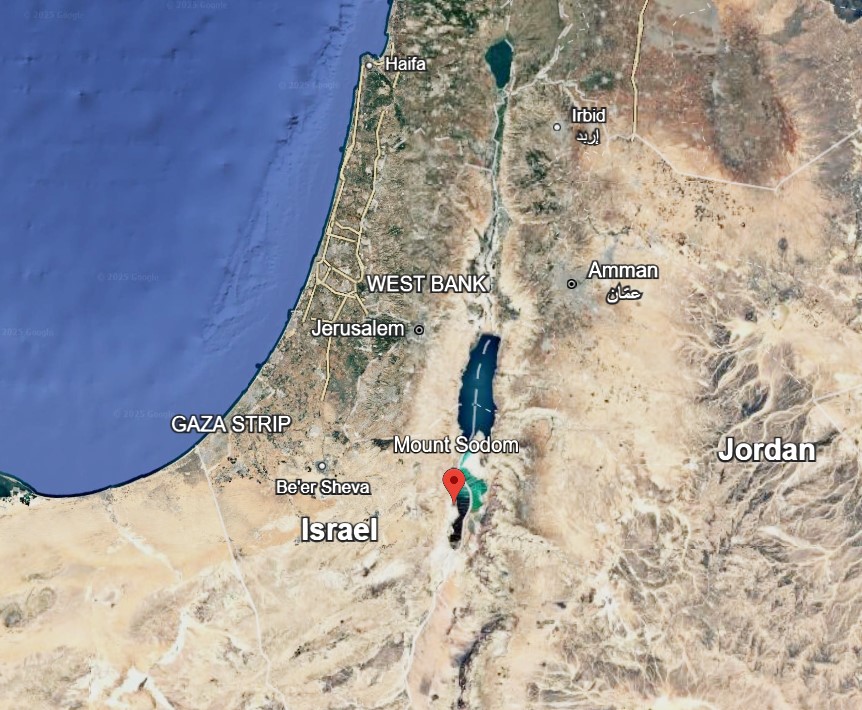
Location of Mount Sodom

Throughout Israel, murals and posters were displayed everywhere—on walls, bus stops, markets, and city squares—showing the faces of Israeli civilians who had been taken hostage during the October 7th Hamas attack. These images were a constant reminder of the human cost of the conflict and of the families still waiting for their loved ones to return home.
Many of these posters had been hanging for months, even years, as negotiations and military efforts dragged on. Sadly, not all of the hostages were returned alive. Some were confirmed dead while still in captivity, and the uncertainty surrounding others weighed heavily on the entire country. The mixture of grief, hope, and frustration was palpable; seeing those posters firsthand made the conflict feel painfully personal and immediate
Leaving the West Bank
Crossing Into Israel and Heading Toward the Dead Sea
After spending a few days exploring the Palestinian West Bank, it was finally time to begin the next leg of our journey—the road toward the Dead Sea and the legendary Sodom Mountain salt cave. We exited the West Bank through an Israeli Defense Force (IDF) checkpoint and re-entered Israel, a process that was surprisingly quick compared to other crossings we’d made on the trip.
Our plan was to follow the shoreline of the Dead Sea southward and stay the night in Ein Bokek, a quiet resort town popular among elderly Israelis who come for the therapeutic mineral baths and famously salty waters. From there, we would continue on the next morning to the salt cave.
Along the Shores of the Dead Sea
A Stop at the Qumran Caves
Before reaching Ein Bokek, we wanted to visit one of the most historically significant places in the region: the Qumran Caves—better known as the site where the Dead Sea Scrolls were discovered. This desert settlement was once home to a Jewish sect (commonly believed to be the Essenes) who lived in isolation and carefully guarded some of the oldest known manuscripts of the Hebrew Bible.
In the late 1940s and early 1950s, Bedouin shepherds wandering these cliffs stumbled upon clay jars containing scrolls thousands of years old. Their discovery became one of the most important archaeological breakthroughs of the 20th century, offering an unprecedented window into ancient Judaism and providing scholars with remarkably early biblical texts.
Climbing to the Caves
A Treacherous Trail and an Ancient View
My friends and I climbed a steep, loose trail that snaked up the side of a limestone mountain. Caves dotted the cliffs like dark windows looking out over the desert. There was no one else around—just us, the hot wind, and the silent, rugged landscape that once hid priceless manuscripts for centuries.
Reaching one of the caves, we sat inside its cool interior, perched high above the Dead Sea. The view was breathtaking. More than two millennia ago, these caves held hundreds of scrolls that are now carefully preserved in museums in Jerusalem. But many scholars believe that dozens—perhaps hundreds—of additional caves remain undiscovered in the surrounding desert mountains.
Sitting there, surrounded by ancient stone and endless desert, it was impossible not to feel the weight of history. The quiet was absolute. The idea that hidden somewhere nearby might still lie another scroll, untouched for thousands of years, stirred the imagination.

Me perched in one of the Dead Sea Scroll Caves at Qumran
Ein Gedi
A Desert Oasis… With a Crowd
Ein Gedi, like many places in Israel, carries deep biblical history. Long before it became a nature reserve packed with hikers and school groups, it was the wilderness refuge of King David before he ever wore the crown.
According to the Bible, David served as a young soldier in King Saul’s army. Saul grew increasingly jealous of David’s popularity and attempted to kill him multiple times. David fled into the Judean Desert and hid in the oasis of Ein Gedi, described in Scripture as a paradise of fresh springs, lush canyon walls, and herds of wild ibex. Remarkably, those same ibex still roam the canyons today—I saw several grazing along the water’s edge as we explored.
One of the most famous biblical events tied to Ein Gedi took place inside its caves. Saul entered a cave to rest, unaware that David and his men were hiding deeper within. David had the perfect opportunity to kill Saul but chose mercy instead, sparing him. This act of restraint helped solidify David’s spiritual and moral authority, eventually leading to his rise as king of Israel.
With all this history, I expected Ein Gedi to feel serene and sacred. Instead, it felt more like a natural Disneyland.
School buses crowded the parking lot. Groups of Israeli grade-school children—many wearing conservative clothing, marching together behind adults waving Israeli flags—filled the trails. Some of the kids even wore T-shirts printed with images of M16 rifles, which added an unmistakably patriotic, almost militarized tone to the setting. It was clear that Ein Gedi was more than a nature reserve—it was also a place where national identity and history were being actively taught.
To make matters worse, much of the main trail was closed due to a landslide.
Trying to salvage the visit, I attempted to peer past the closed section for a better look at the canyon. Within seconds, a young Israeli ranger sprinted toward me, frantically insisting I stay back because the trail was unstable. It didn’t look especially dangerous, but I wasn’t going to argue.
The only accessible waterfall was overcrowded with children, so we changed plans.
Nahal Arugot
A Hidden Desert Paradise Inside the Ein Gedi Reserve
The ranger suggested we try Nahal Arugot—another trail within the larger Ein Gedi Nature Reserve—and his recommendation couldn’t have been better.
Almost immediately, everything changed. The noise of Ein Gedi disappeared. The crowds faded, replaced by silence, desert winds, and the steady sound of flowing water bouncing between the canyon walls.
We hiked about forty minutes deeper into the oasis, following a cool desert stream that snaked through narrow passages lined with reeds, palms, and fig trees. It felt like entering a hidden world carved into the heart of the Judean Desert. Sunlight shimmered off the cliffs, and wild ibex wandered peacefully along the banks.
Eventually, the canyon widened to reveal a stunning natural amphitheater. A twenty-foot waterfall spilled into a turquoise pool that looked almost unreal in the middle of the desert.
We dropped our packs and jumped in—the water was crisp, clean, and refreshing. Floating beneath the falls, with only birds and rushing water around us, felt like discovering a secret slice of paradise.
After lingering in the cool water, we dried off and hiked back through the canyon as the late-afternoon sun painted the rocks gold. From there, we continued south along the Dead Sea to Ein Bokek, where we checked into our hotel for the night—recharged, grateful, and ready for the next day’s descent into the Sodom Salt Cave.
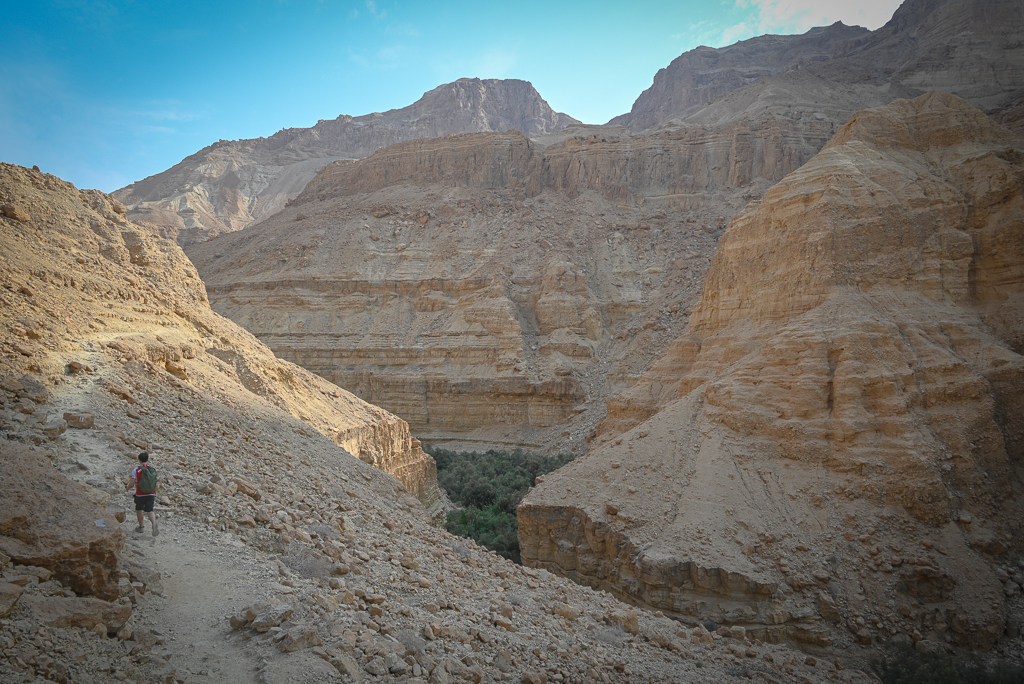
Nahal Arugot trail
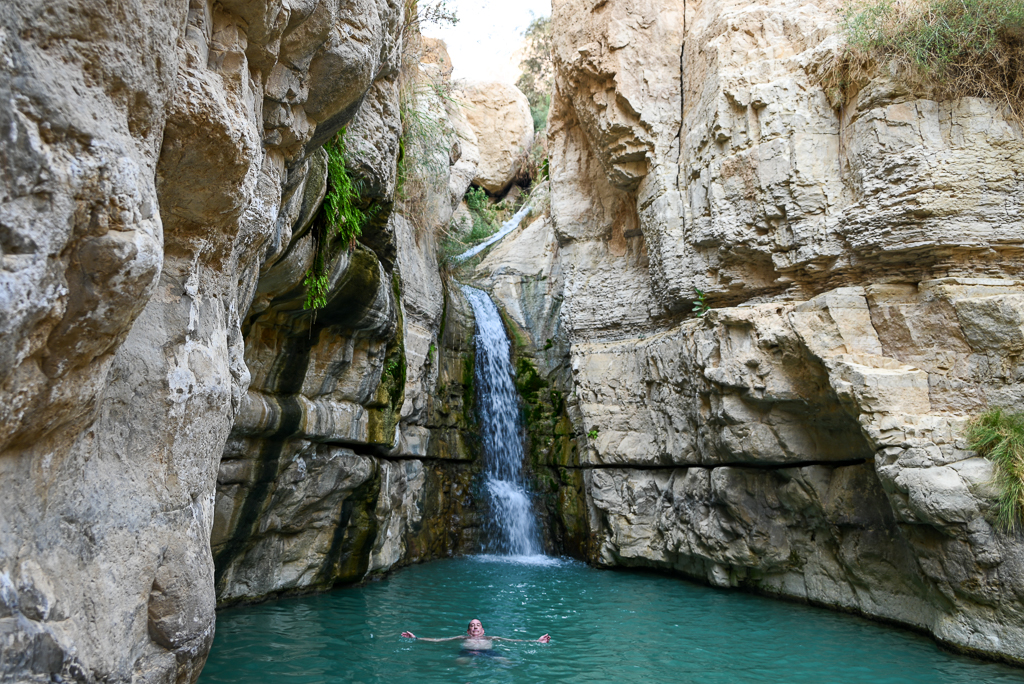
Hidden waterfall at Nahal Arugot trail/In the Judean Desert’s Ein Gedi, Nahal Arugot sheltered King David as he fled Saul. Today, its springs and cliffs remain a place where nature and biblical history meet. “David is in the Desert of En Gedi.” (1 Samuel 24:1)
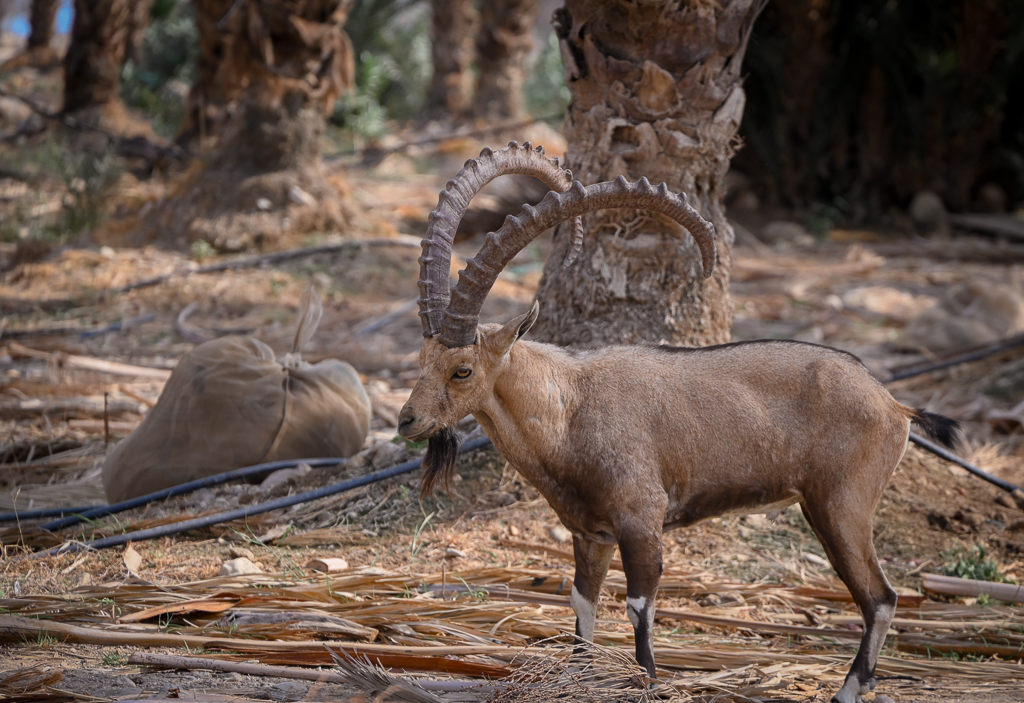
Wild ibex goats in Israel are a conservation success story

Wild ibex goats in Israel are a conservation success story
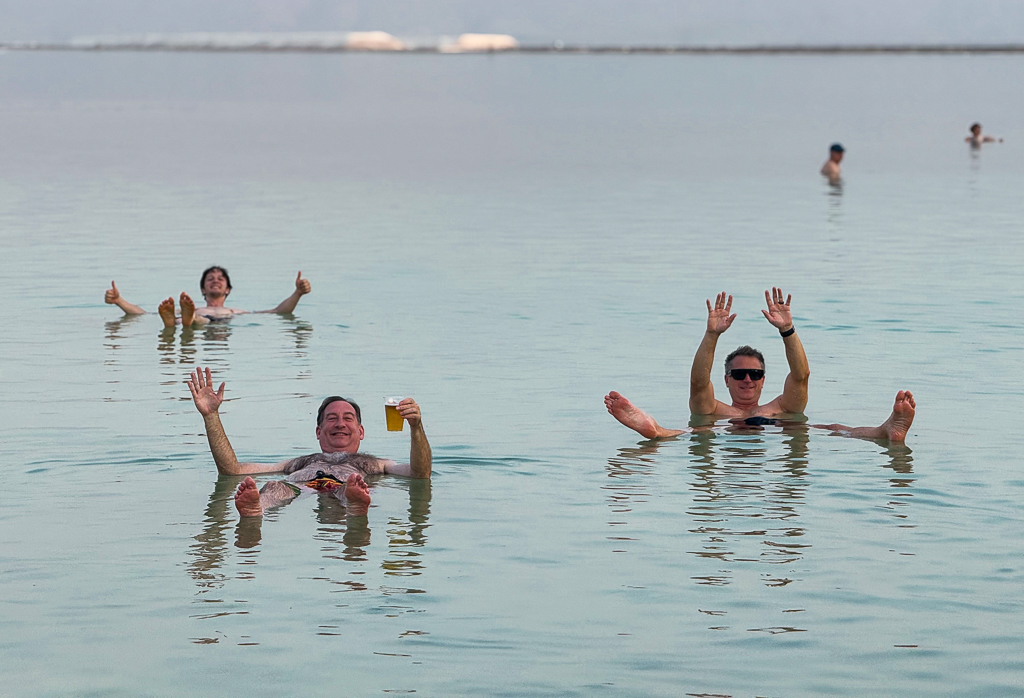
Floating in the Dead Sea at Ein Bokek
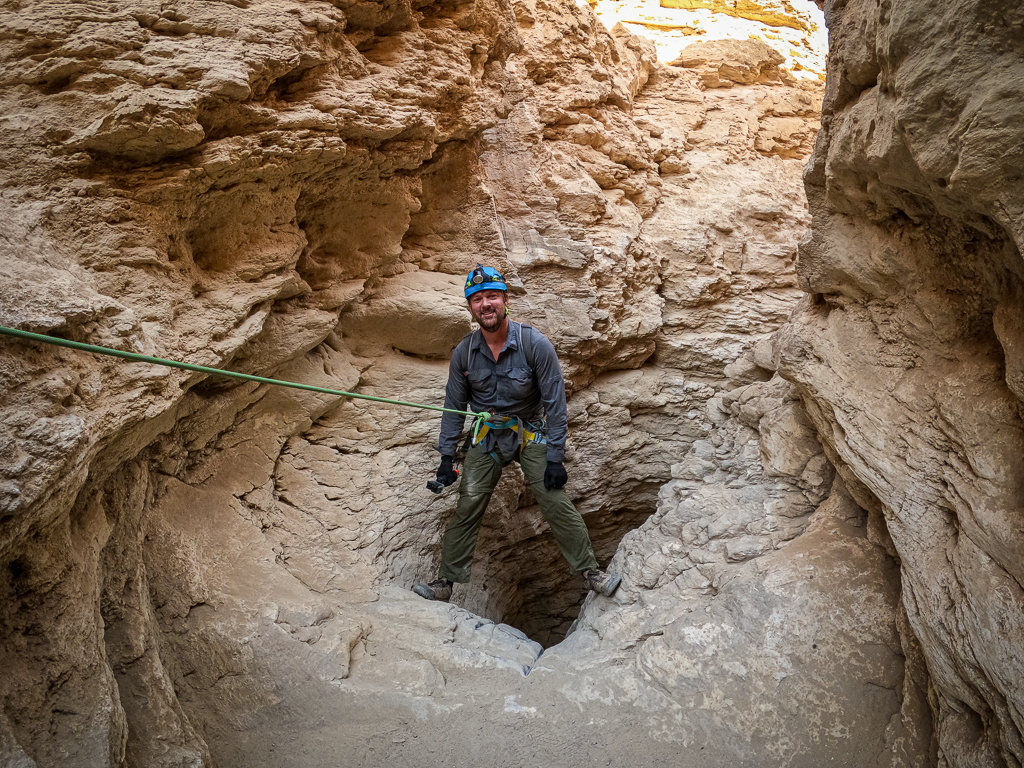
Me about to descend through the Fox’s Chimney into the cave

The little dot in the center is my friend rappelling 200 feet from the top of Mount Sodom into the bowels of the mountain

View as I descended of my feet dangling over the 200′ abyss
Video I took of rappelling 200 feet
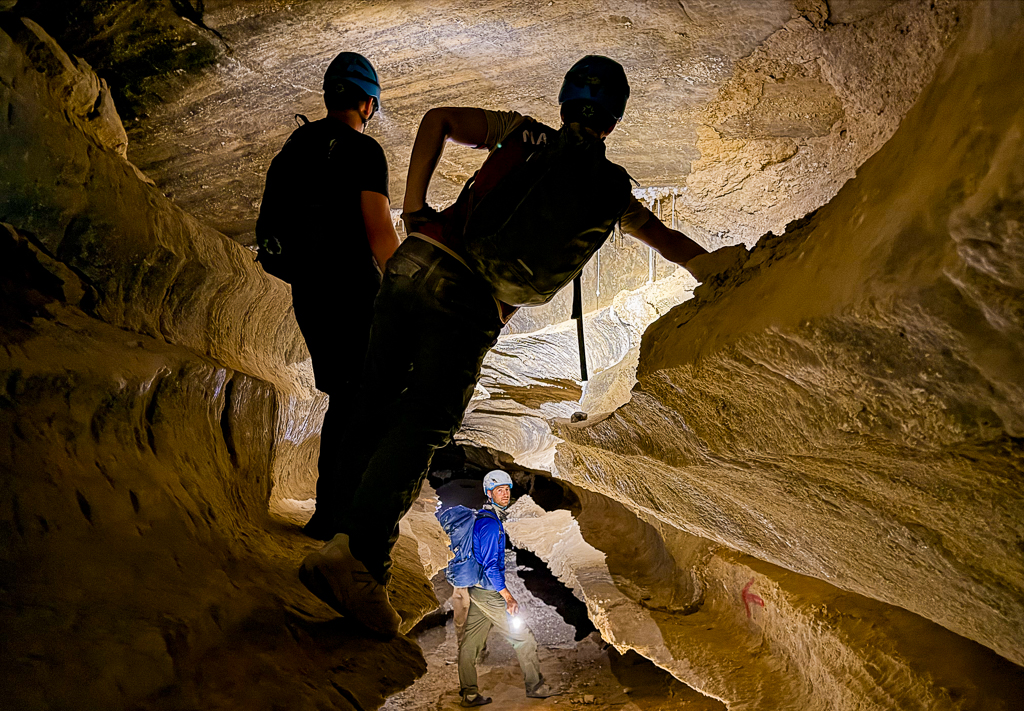
Exploring the Salt Cave

Exploring the Salt Cave

Exploring the Salt Cave

Cave bat
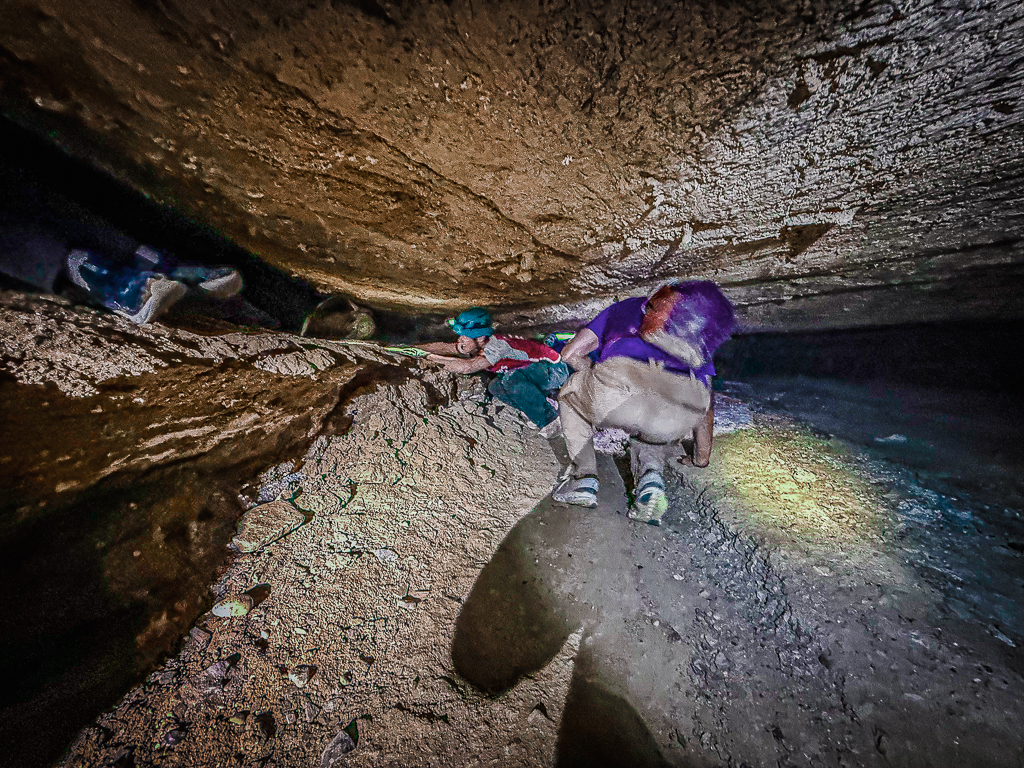
Belly crawling
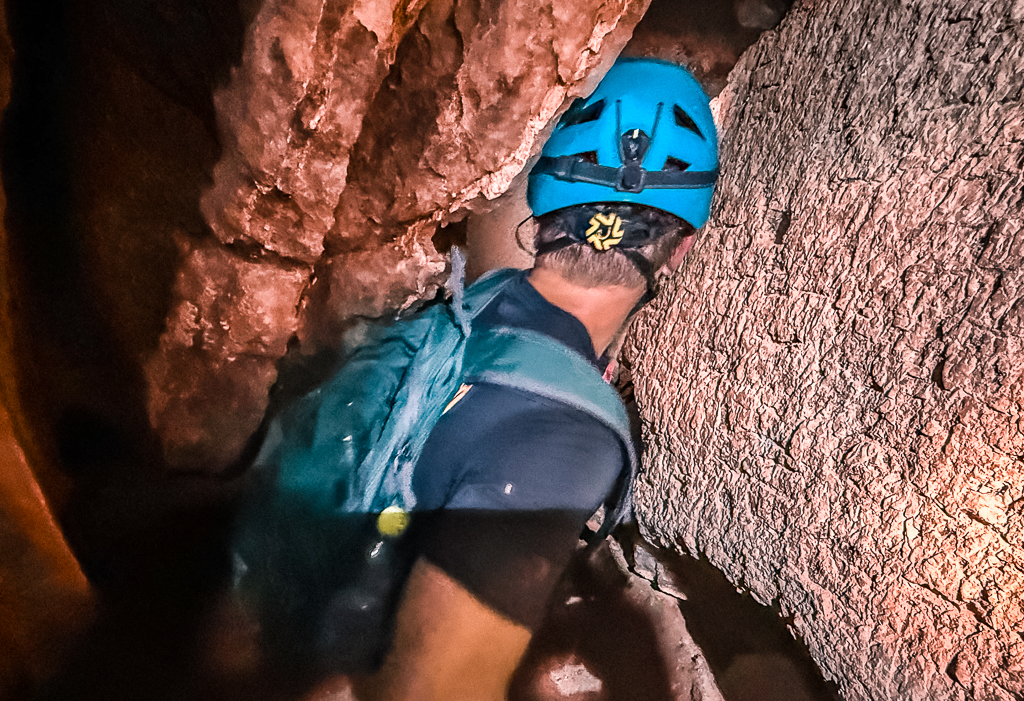
Tight squeezes

Dan admiring the salt formations
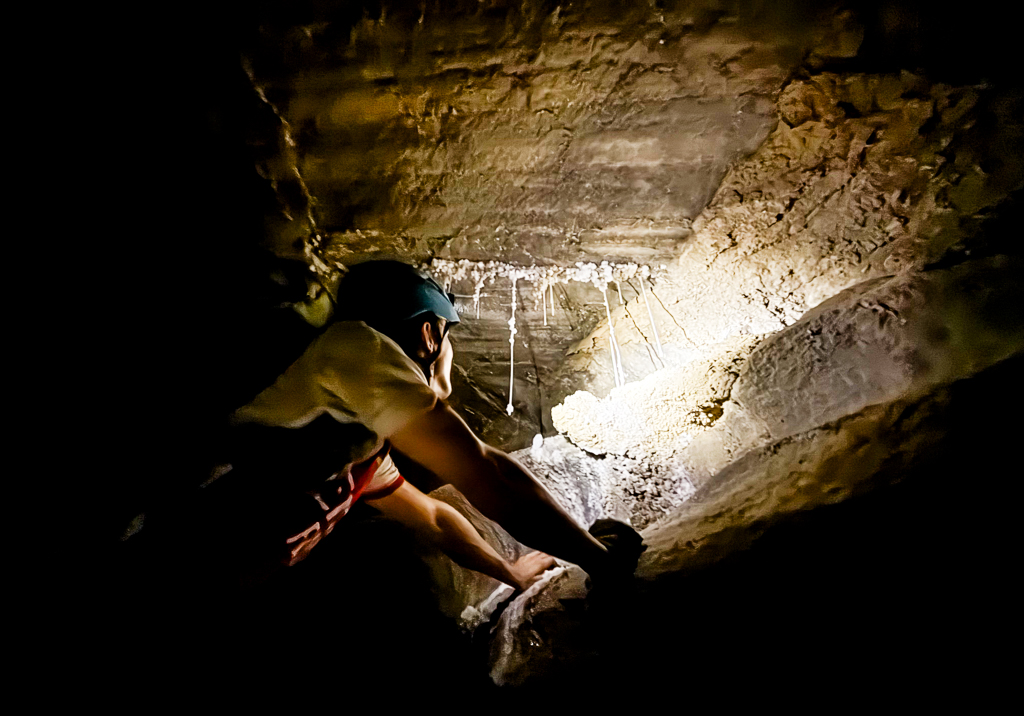
Salt formations
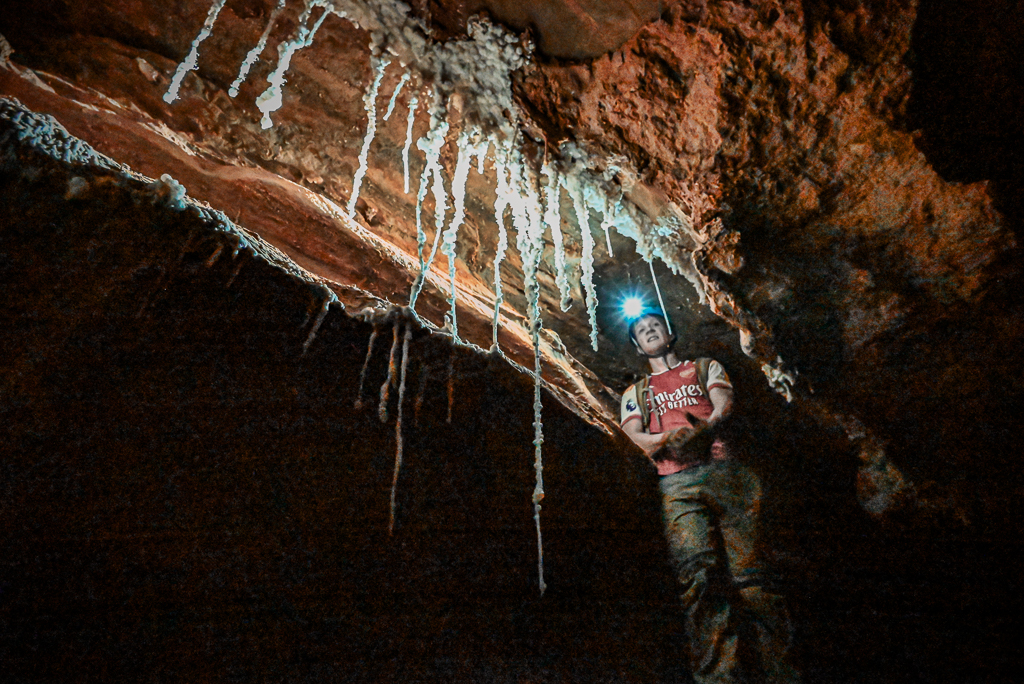
My favorite salt formation in the cave

My room overlooking the beach in Tel Aviv

